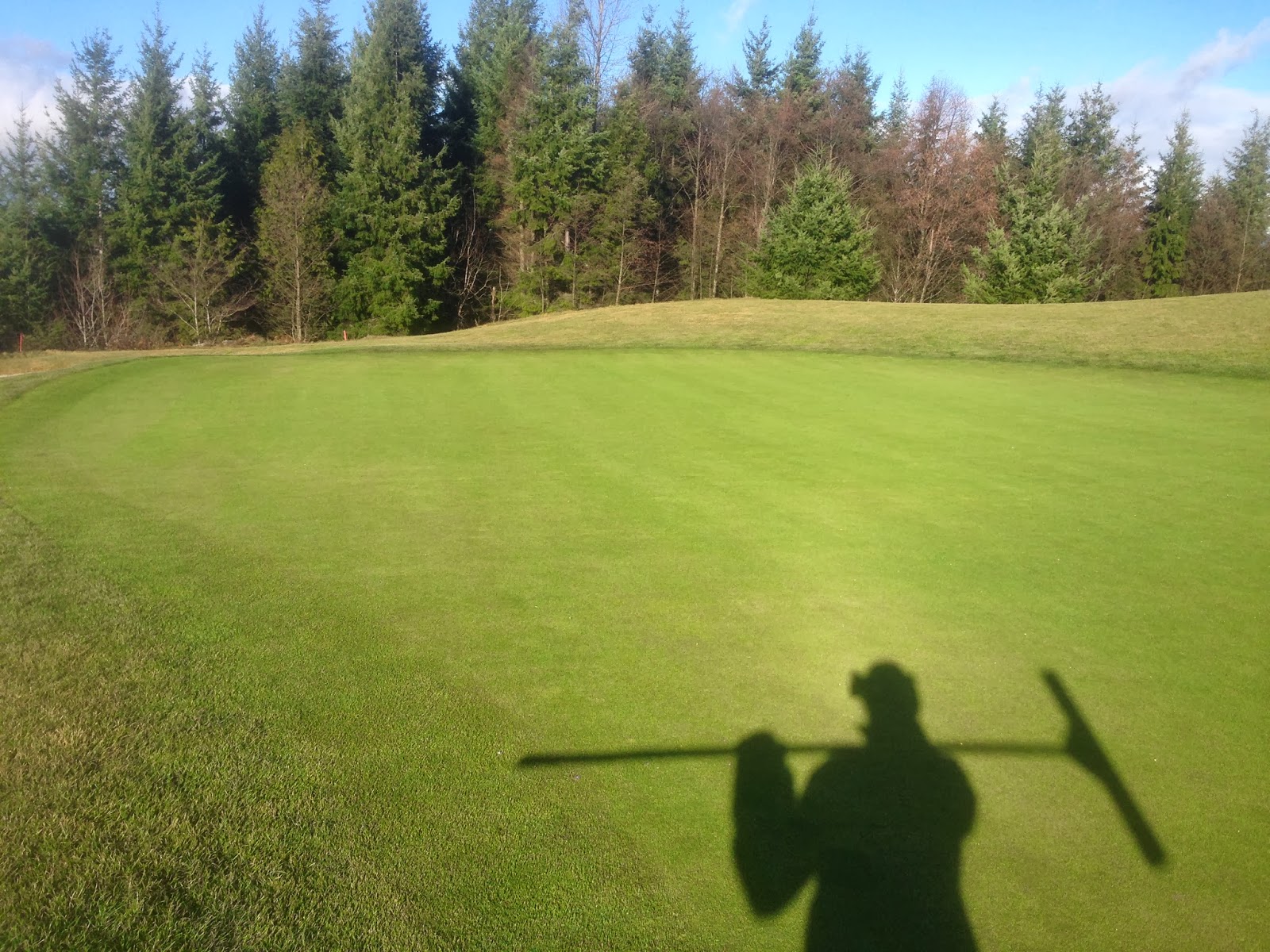Seven hours, 34 minutes and 4 seconds. THAT is how much less daylight (sun) that we experience here in the city of Snoqualmie on December 21st compared to June 21st. These dates are the days on which we experience the shortest day of the year and the longest day of the year, also known as the winter and summer solstices.
As we all know, one of the essential ingredients to growing turfgrass is sunlight. Without sunlight, the turf has no energy and is handicapped in it's ability to utilize it's food sources to produce and maintain it's roots and shoots. Add the stresses of nasty winter weather (remember the bitter cold temperatures of a few weeks ago?) and traffic on top of that and it is a given that you won't have a happy turfgrass plant.
Our golf course is spread out over a large area, with each hole in it's own micro climate which is largely created by the topography of the land around it as this can determine air flow, temperature and sunlight exposure which can drastically affect turf performance from hole-to-hole.
Take a look at the photo below. This is hole number six and this picture was taken around 11:00 AM yesterday. If yesterday's sunrise occurred at 7:56 AM, this means that this green got about 3 hours of sun before disappearing behind the houses and trees to the right of the cart path, leaving the green in the shade for a little over 60% of total daylight hours. That definitely takes a toll on the turf.
 |
| Hole #6 |
 |
| Hole #5 |

No comments:
Post a Comment